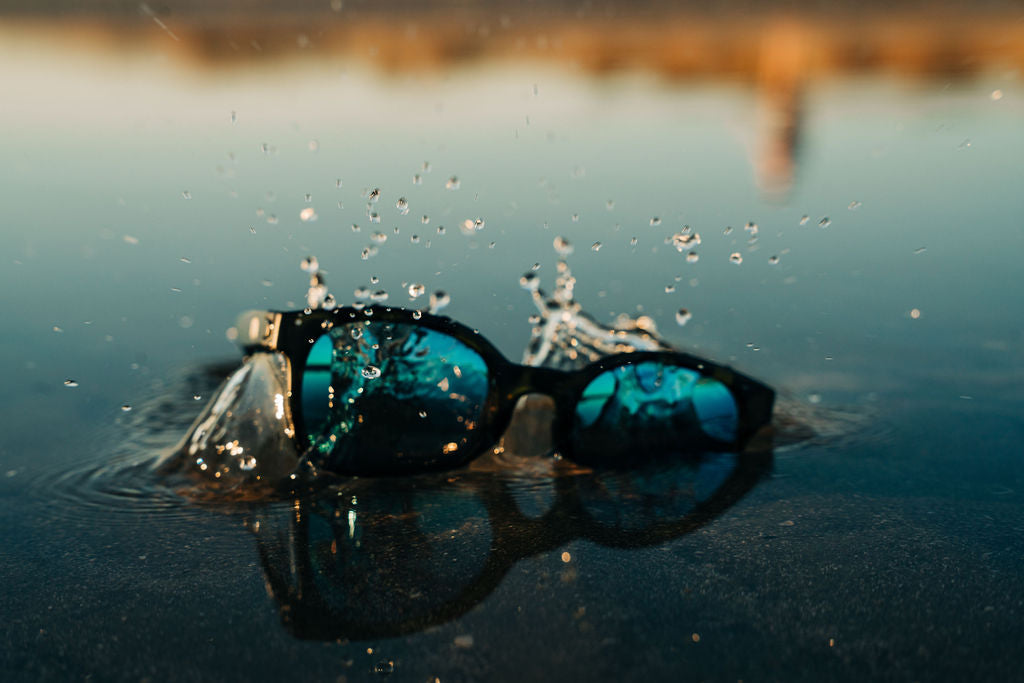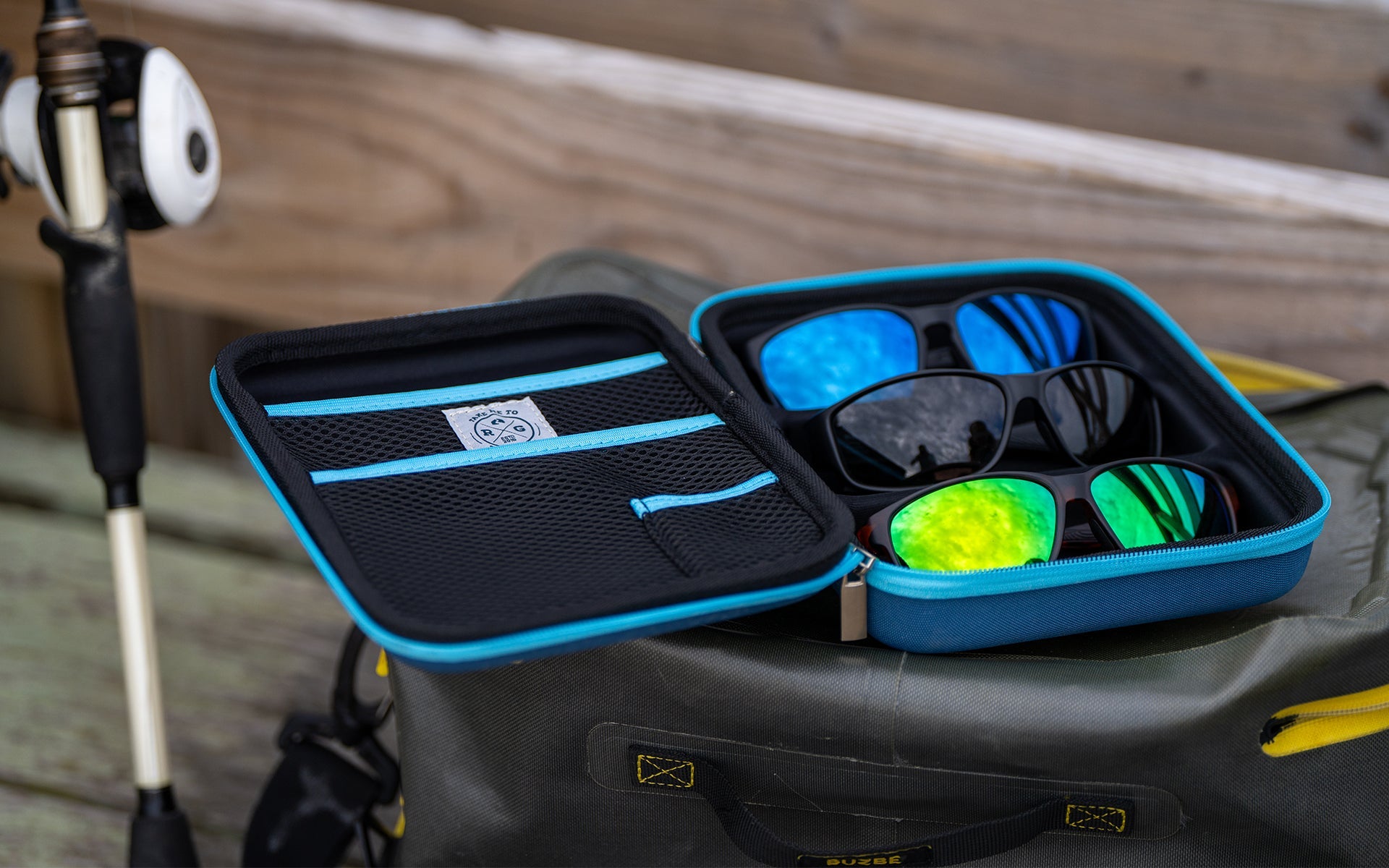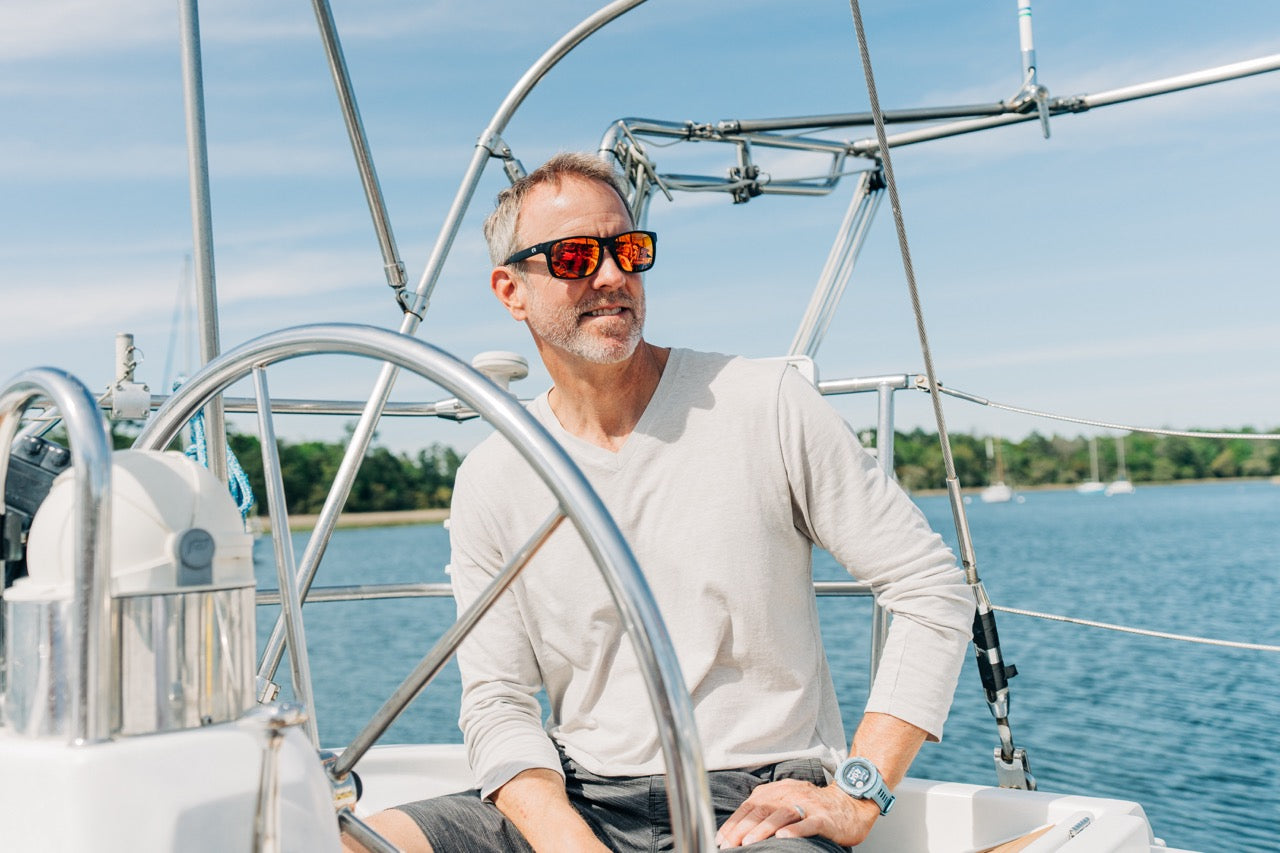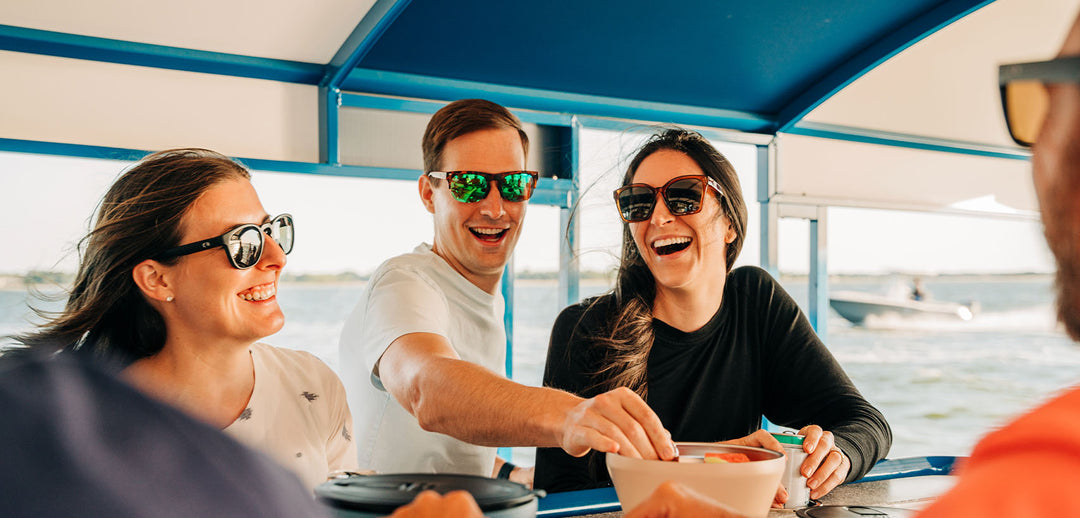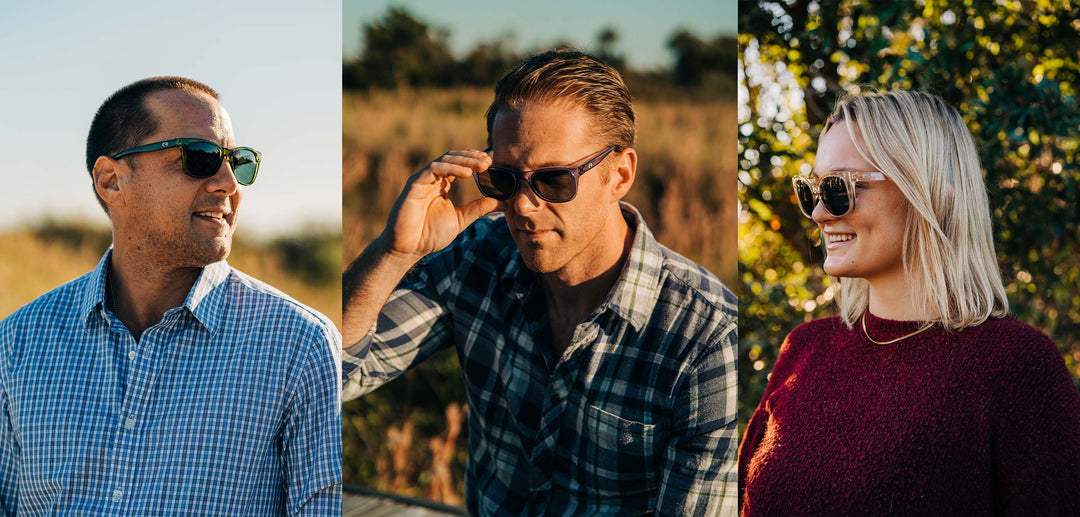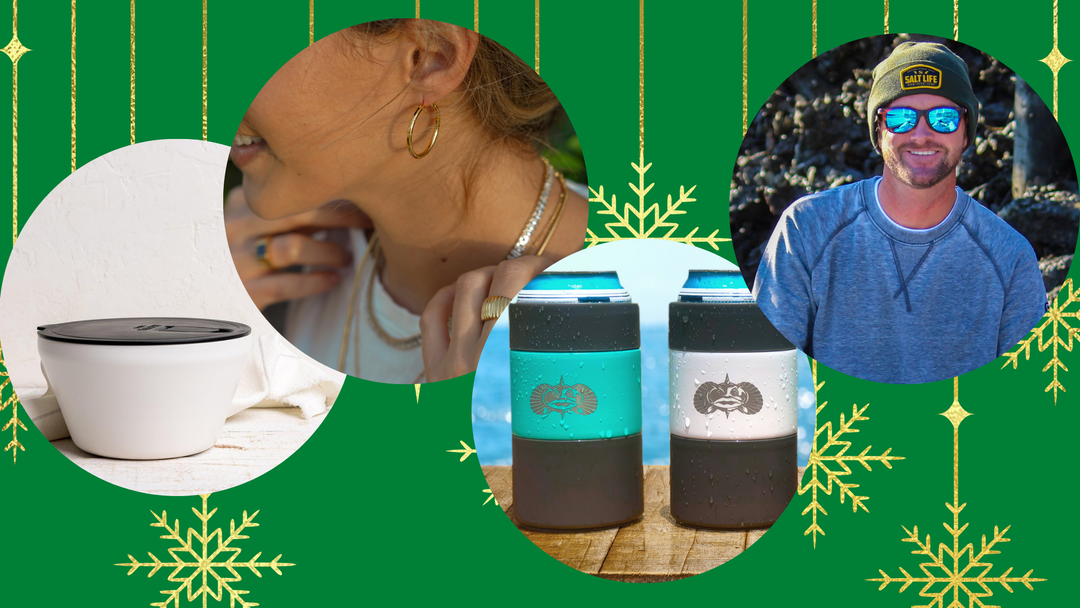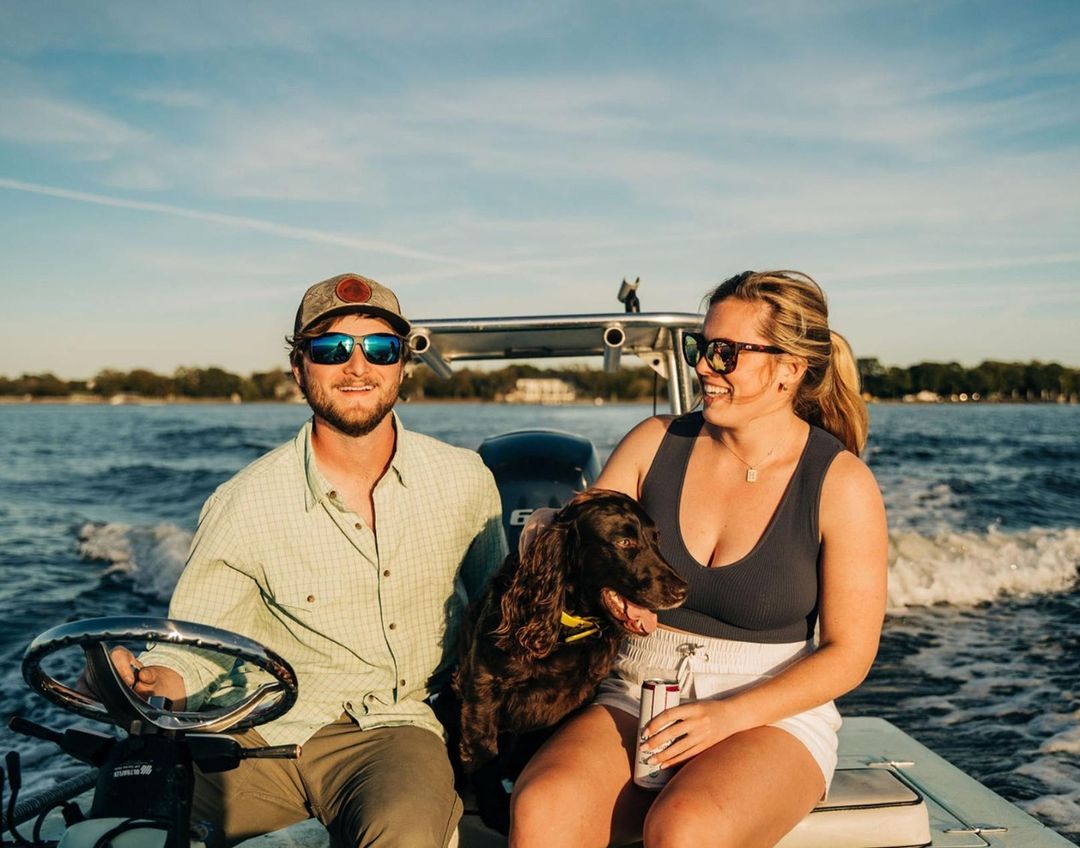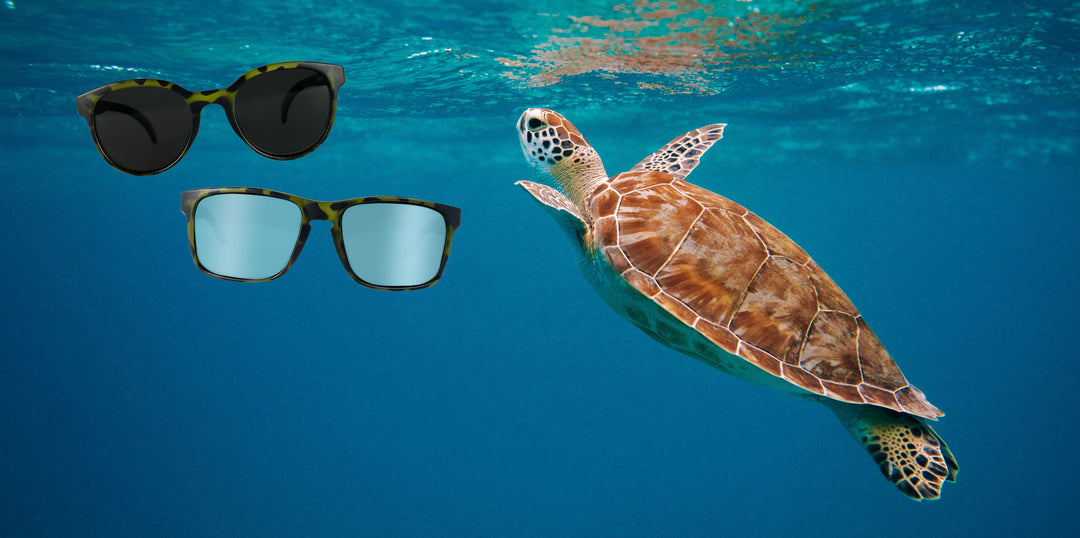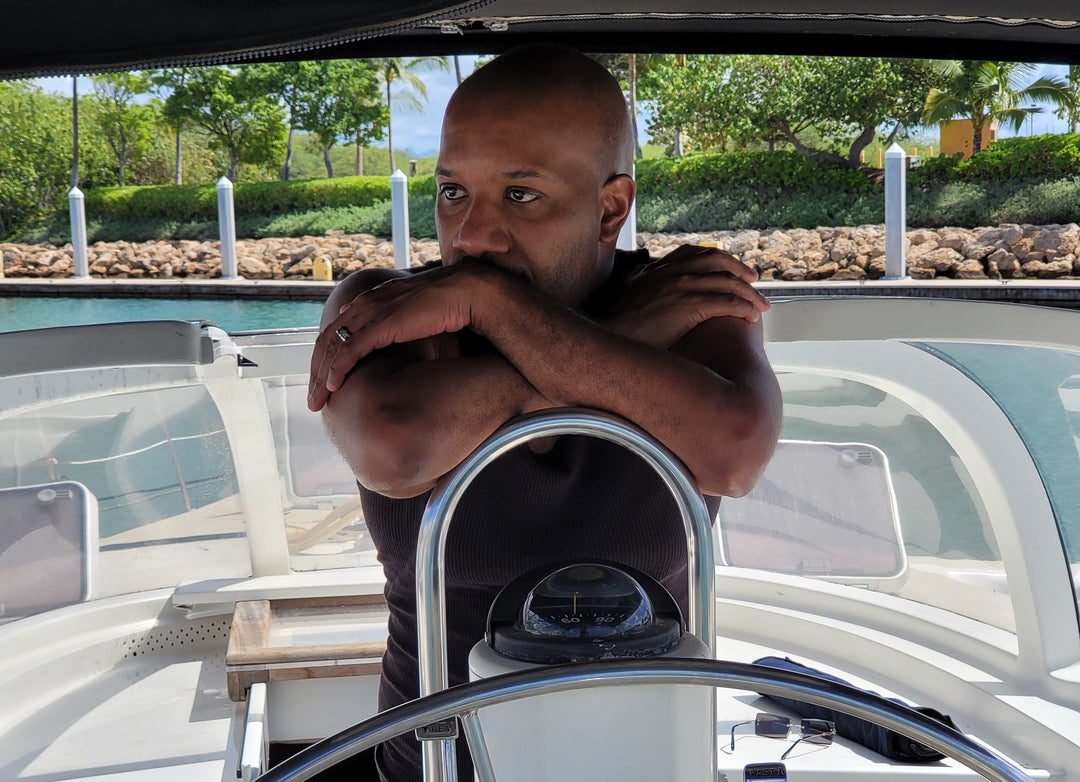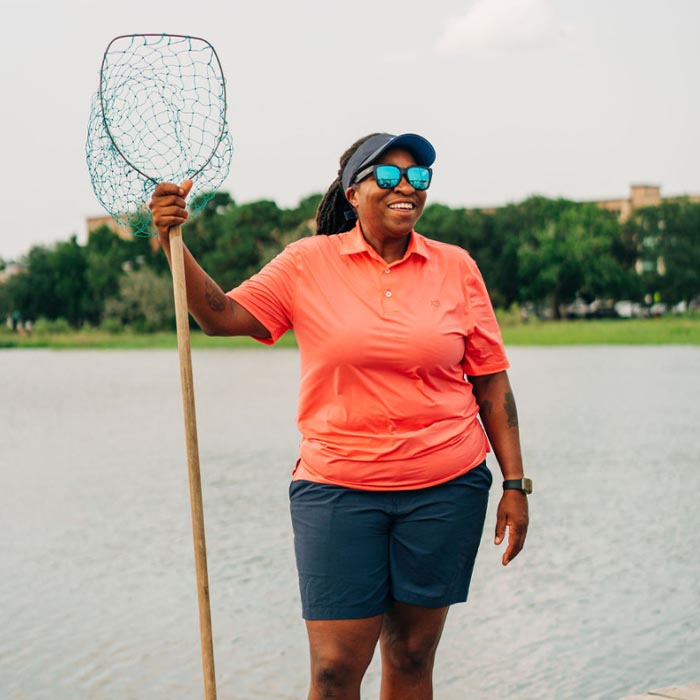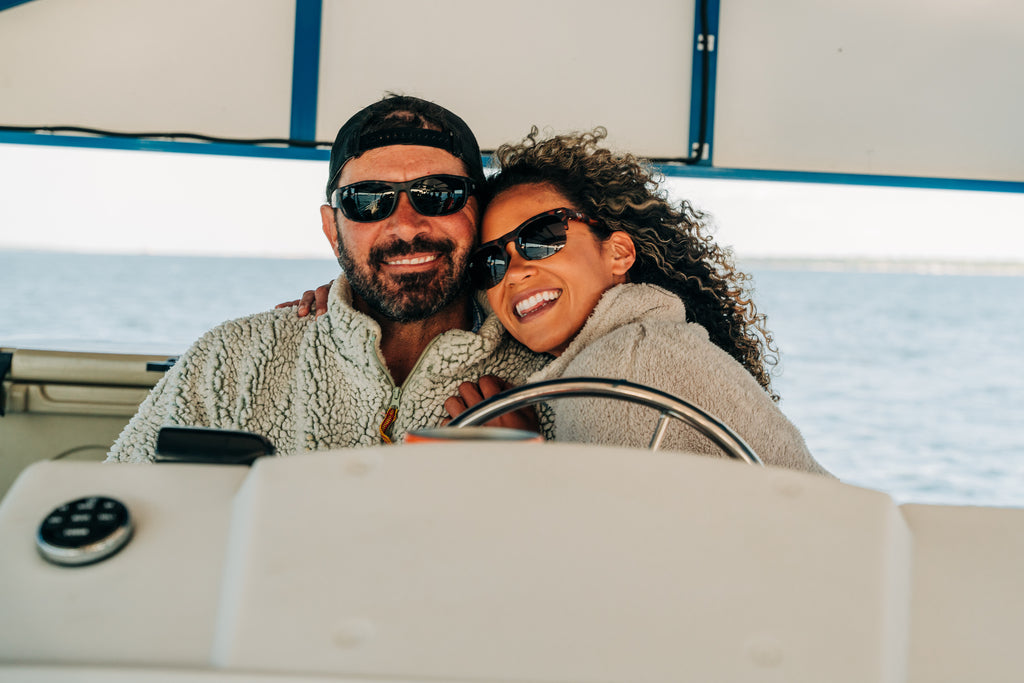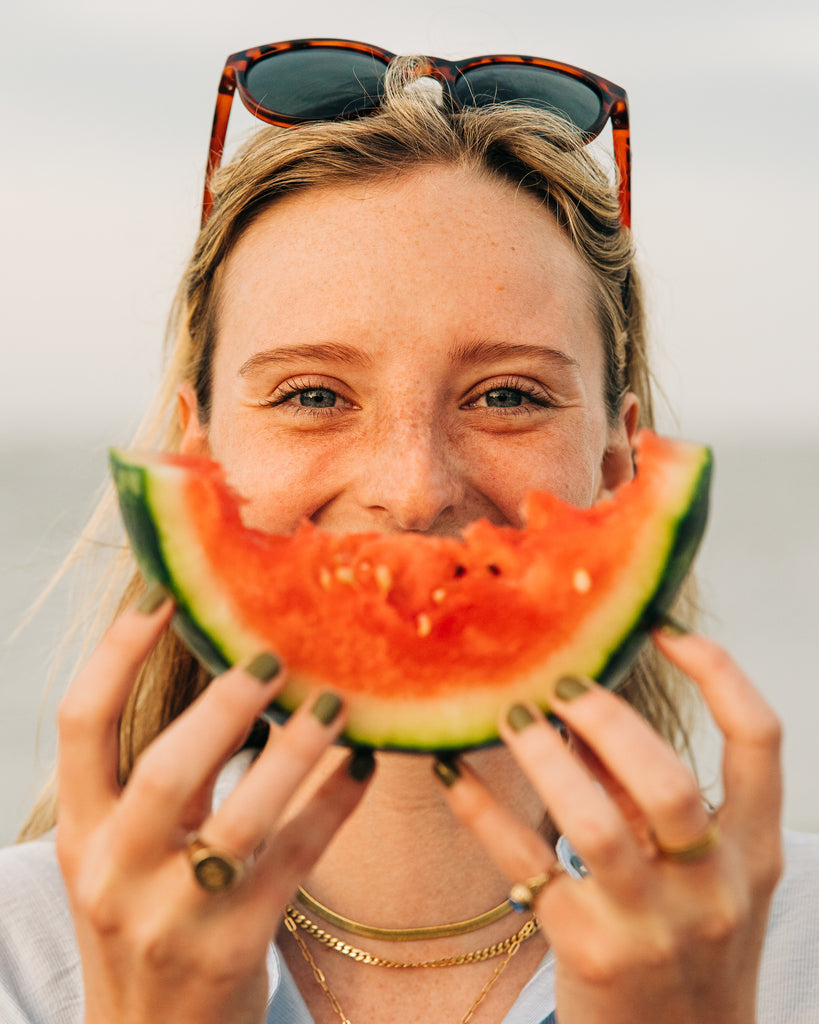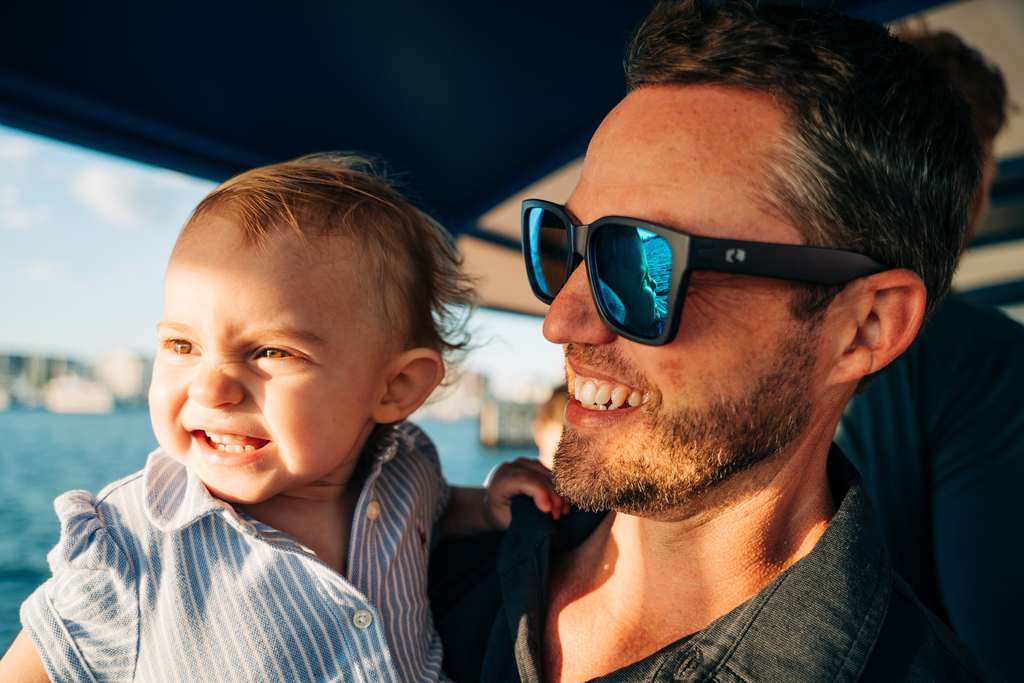Fishing for the Right Lenses
Just like there are different hooks and bait to use when you’re going fishing — there are different sunglasses to wear, too. Not just for style, the right sunglasses can help sharpen your sight by cutting through the glare of the water. Finding the right pair is a lot like finding your own unique way to cast your rod and reel in a big one.
So what do you need to know in order to find the best fly fishing sunglasses? Just keep reading to find out.
Fit
Fit isn’t just about finding the right frame for your face shape. And it’s not about how long you can wear a pair without it pinching your nose. Beyond style and comfort, when you focus on fit you should focus on what you’re actually setting out to do. For fly fishermen, that means paying close attention to sunglasses that provide full coverage protection.
Look for:
- Thick temples: The “arms” of your sunglasses should hug your face and feel secure when you shake your head. But if they squeeze or leave a mark, try finding a size bigger. Your sunglasses shouldn’t feel like they’re on your head or bother your ears when you wear them.

- Large lenses: You want a pair that will make sure wind doesn’t kick up any dirt, sand or water into your eyes. Larger lenses that sit more on your cheeks make sure you’re getting complete protection. To see if the lenses are wide enough, look around just by moving your eyes instead of your head. You’ll be able to see if there’s too much space above, below or to the sides that lets in too much light.
Function
You would think that getting a pair of sunglasses that works the way you want them to is easy. All they need to do is keep you from squinting in the sunlight, right? Well, it’s not so simple. A wrap-around pair of mirrored lenses look cool, until there’s lots of scratches blocking your view. A great, sturdy pair with thick temples may feel comfortable, until you find out they aren’t polarized.
Look for:

- Polarization: Polarized lenses help reduce eye-strain, glare and increase clarity in vision by blocking horizontal light. Always check that your lenses are polarized, and not just darker than average.
- Anti-scratch technology: If your lenses scratch when you put them in your back pocket or toss them in your day bag, then they won’t be very useful after a trip or two. Finding a pair that can last is key.
- Hydrophobic coating: If you want to play in the water, then your lenses should be ready. Hydrophobic coating means that water will slide right off your lenses without distorting your view.
- UV Protection: Did you know that water reflects harmful UV rays? UV can cause serious damage to your eyes if your unprotected. Having a pair of lenses with UV coating will make sure you don’t put yourself at risk.
- Anti-fog lenses: Your sunglasses should always help you see with crystal clear vision, which means added features like anti-fog lenses are a necessity. Make sure that no matter where you are or what you’re doing, your lenses will work for you.
Lens Color
Amber/Copper: Great for early morning, amber/copper lenses will help you cut through the glare of the water and easily hunt for fish. Amber lenses also increase contrast and are perfect to wear on cloudy days or during lowlight conditions.
Rose: In bright-light conditions, a rose lens will help reduce contrast and are built to balance out light. If you’re looking for a lens you can wear while fishing and on the road, a Rose/Red color is great for general usage.
Blue: Made for the blinding sun, blue lenses are perfect for full-sun situations. If you’re an offshore fisherman, a blue lens will help you look through the dark blue depths of the sea.
Grey: For everyday activities, a gray lens will give you clarity without increased contrast or shift in color balance. You’ll see colors pretty much the same as you normally would, so a gray lens are great for everyday wear.
Price
Sometimes, “you get what you pay for” really means you get to pay $150 more for brand name recognition. In other words, a higher price doesn’t mean a higher quality.
The best sunglasses for fly fishing can range anywhere from $50 - $250 per pair. More times than not, the difference comes down to the brand’s logo. Be wary of how much your spending on a pair of sunglasses.
Look for:
-
The warranty. Some sunglasses will include a lifetime warranty, and others will give you a 90 day guarantee. The best way to determine if the price your paying is worth it is to look at the warranty and returns. What happens if a specialty screw falls out? Or the frame gets distorted? Do you have the option to repair your lenses, or are you stuck buying a new pair altogether? Manufacturers who stand by their product will offer coverage without mountains of fine print and exclusions.
*Thanks to our friends @creardon86, @penaltyboxfishing, and @jacombdupree
